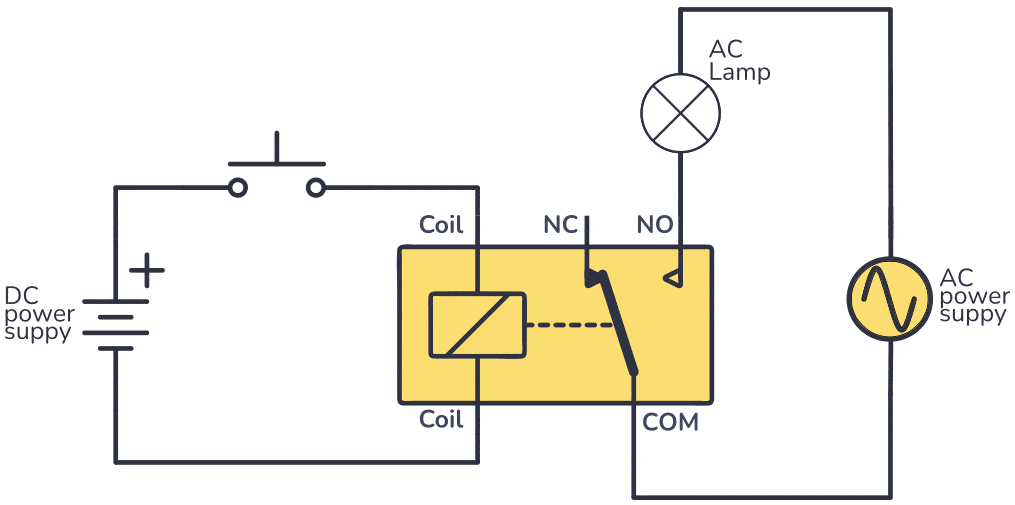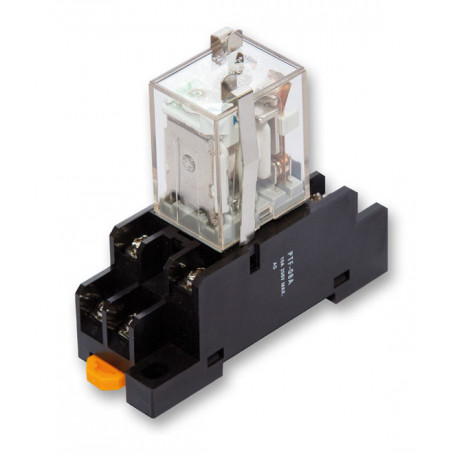A relay is an electromechanical or electronic device used to control one electrical circuit by opening and closing contacts in another circuit. It functions as a switch that is operated by an electrical signal rather than manual intervention. Relays are widely used in various electrical and electronic systems, from household appliances to industrial automation, because they allow low-power control signals to switch much higher currents or voltages.

At its most basic, a relay consists of four main parts: an electromagnet (coil), an armature, a spring, and one or more sets of contacts. When a voltage is applied to the coil, it generates a magnetic field. This magnetic field attracts the armature, a movable lever, causing it to either make or break contact with a set of electrical contacts. When the voltage is removed, the spring returns the armature to its default position, switching the contacts back to their original state.
There are two main types of contacts in a relay: normally open (NO) and normally closed (NC). A normally open contact does not allow current to flow until the relay is activated, while a normally closed contact allows current to flow until the relay is activated. This flexibility enables relays to be used in a variety of control and safety applications.
Relays can be broadly divided into two categories: electromechanical relays (EMRs) and solid-state relays (SSRs). EMRs use physical moving parts to open or close the contacts, whereas SSRs use semiconductor devices and have no moving parts. Solid-state relays are faster and quieter and typically last longer due to the absence of mechanical wear, but they are also more expensive and may require additional heat dissipation.
Relays are commonly used in circuits where isolation is needed between the control and load circuits. For example, a small 5V signal from a microcontroller can trigger a relay to switch a 240V load, ensuring that the high-voltage and low-voltage sides remain electrically isolated from each other. This makes relays vital for protecting sensitive control equipment from electrical surges or faults on the load side.
In industrial automation, relays are used for tasks such as motor control, safety interlocking, and logic operations. In automotive applications, they control headlights, fuel pumps, and other electrically operated systems. Relays also play an important role in telecommunications and power systems, particularly for signalling and fault protection.

One key advantage of relays is their ability to be integrated into logic circuits to perform operations like AND, OR, and NOT using only electrical components. This was especially important in early computing and control systems before the development of modern digital electronics.
In summary, a relay is a switch operated by an electric signal, allowing control over another circuit. Whether electromechanical or solid-state, relays provide electrical isolation, allow low-power control over high-power loads, and play a crucial role in both simple and complex control systems across many industries. Their reliability, versatility, and ability to handle different voltages and currents make them fundamental components in electrical engineering.